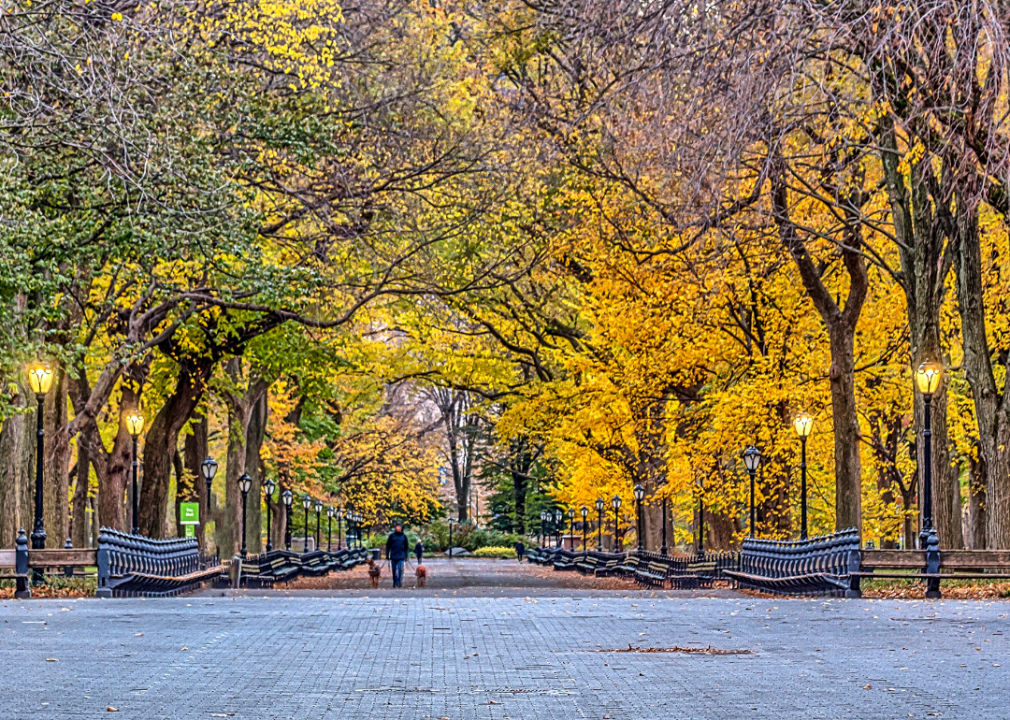
Texas has 4 of the 50 cities with the most green space per capita
Texas has 4 of the 50 cities with the most green space per capita
Green space is beneficial anywhere, but especially in concrete jungles like those found in many U.S. cities. The World Health Organization reports that green areas are essential to both the ecosystem and the mental health of citizens; though the color is fading quickly in urban areas that are cutting down trees and rapidly building on open space. There are, however, some cities across America that are fighting hard to keep green space within their borders.
Using data from the Organization for Economic Co-operation and Development, analyzed by the United Nations Office for the Coordination of Humanitarian Affairs, Stacker considered the 70 U.S. cities with the most green space per capita and then ranked the top 50 by the green space areas devoted to parks and urban regions.
Read on to see which cities in your state made the list, or see the national story here.
#45. Austin
- Green space per capita: 2,978 sq. ft.
- Population: 2 million
Wildflower centers, hike and bike trails, and Lake Austin beach entrances make up 20,000 acres of green space. The Texas town touts the health benefits that public open space offers, particularly in the development of children, higher property values, and decreased crime rates. Events like Zilker Botanical Garden's Monarch Appreciation Day, which promotes further pollination for an even greener ecosystem, draw thousands of visitors to Austin annually.
#44. San Antonio
- Green space per capita: 3,172 sq. ft.
- Population: 2.3 million
Without careful planning and preservation through land conservation and community engagement, the Green Space Alliance of South Texas warns that urban growth will disrupt San Antonio residents' quality of life. The $8.1 million Pearsall Park was constructed in 2016 with American Ninja fitness zones and zip lines to keep citizens moving. Along with major parks, smaller areas like The Greenline offer acres of land and family activities, including giant chess, public art, and trails.
#30. Dallas
- Green space per capita: 9,637 sq. ft.
- Population: 7.1 million
Green Dallas reports that 46% of the city's total land is developed, and about 27% of that is designated green space. Other green initiatives Dallas is taking include increasing the urban tree canopy, preserving the Great Trinity Forest, and restoring wildlife territory. For now, Texans take in urban green space in popular parks, including Dragon, White Rock Lake, and River Legacy. Other popular green spots include Arbor Hills Nature Preserve and the Dallas Arboretum and Botanical Garden.
#10. Houston
- Green space per capita: 41,514 sq. ft.
- Population: 6.6 million
Houston has undergone a green renaissance recently with the $200 million Bayou Greenways 2020 project, which hopes to have 60% of residents within 1.5 miles of a park when it's completed. Developers announced in 2019 that the 550,000-square foot, abandoned Barbara Jordan Post Office has been repurposed and will house a 6-acre rooftop park, one of the largest in the world.
Some cities have gotten creative in constructing green space within their boundaries. Houston, Nashville, and Des Moines, Iowa, are among the many cities putting large green spaces on public rooftops. Atlanta even has plans to cover some of its highways with parks.
The former commissioner of the New York City Department of Parks and Recreation Adrian Benepe promotes the 10-Minute Walk campaign, an initiative to have a park within a 10-minute walk in all U.S. cities by 2050. Now the senior vice president for the Trust for Public Land, Benepe points to how green space helps the ecosystem. "When I see a tree, I see the work of God because a tree is a remarkable machine," Benepe said. "It does extraordinary things in exchange for very little."
What's more, the health benefits of parks and green spaces in cities are numerous, according to The National Recreation and Park Association. Large parks promote active living, which can reduce the risk of diabetes and heart disease, while research shows even small parks can reduce stress and improve creativity and mental health.
To learn more about which cities made the top of the list, keep reading below.
Cities with the most green space per capita
#1. Minneapolis, MN: 105,843 sq. ft. per capita
#2. Kansas City, MO: 93,349 sq. ft. per capita
#3. Cincinnati, OH: 67,723 sq. ft. per capita
#4. Washington, DC: 63,138 sq. ft. per capita
#5. Nashville, TN: 57,699 sq. ft. per capita



